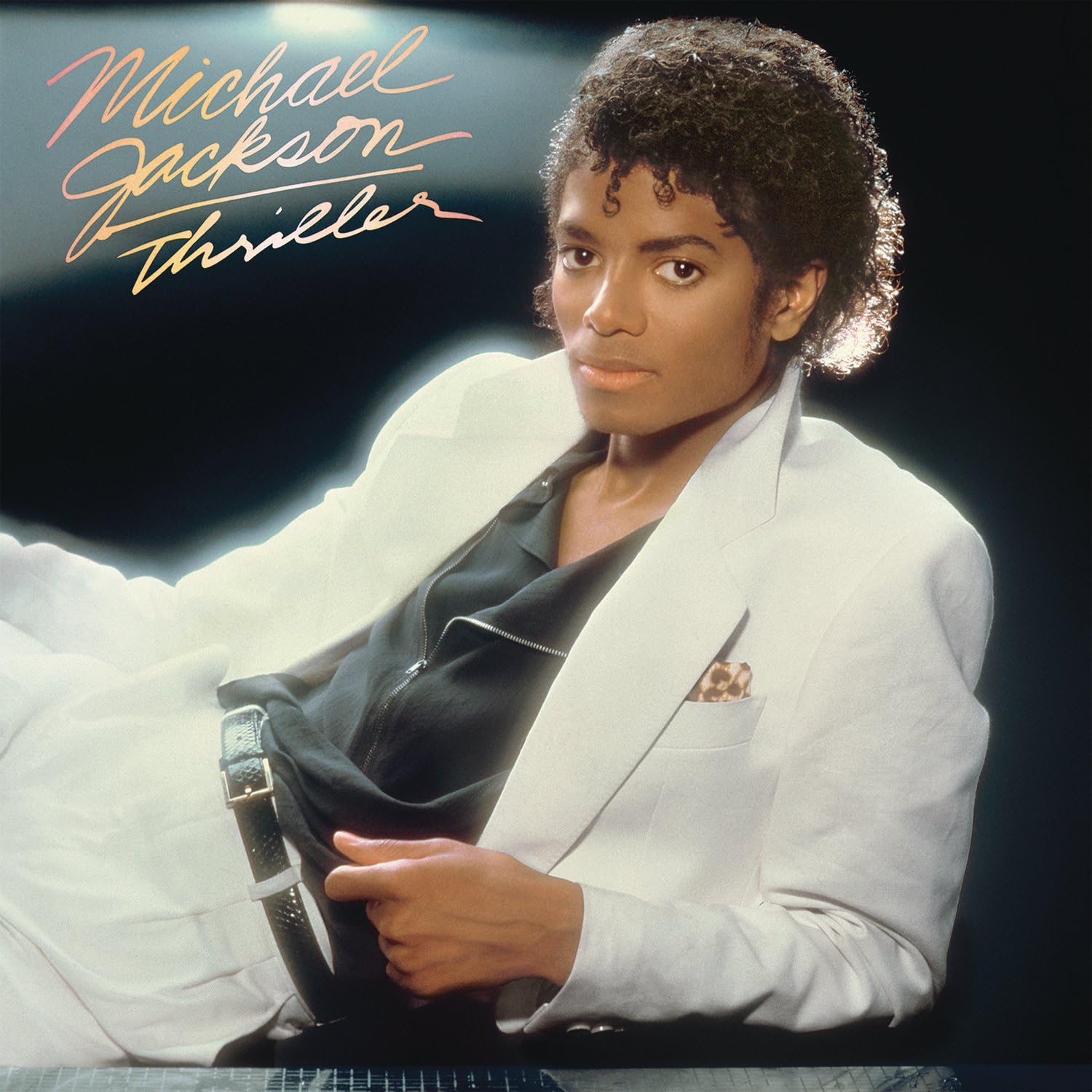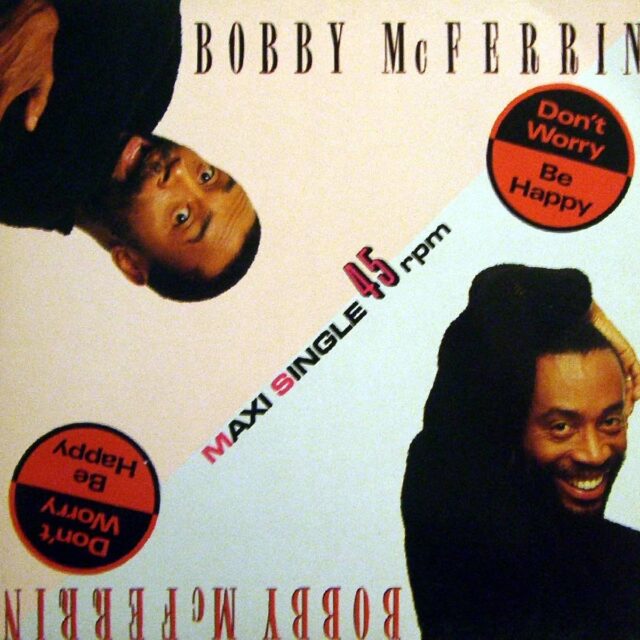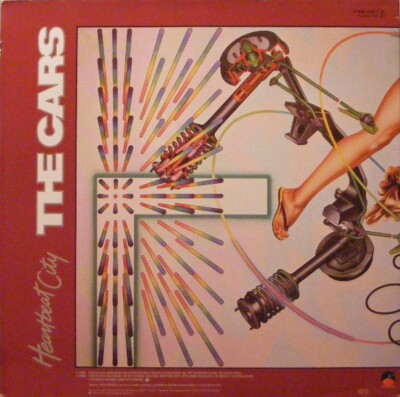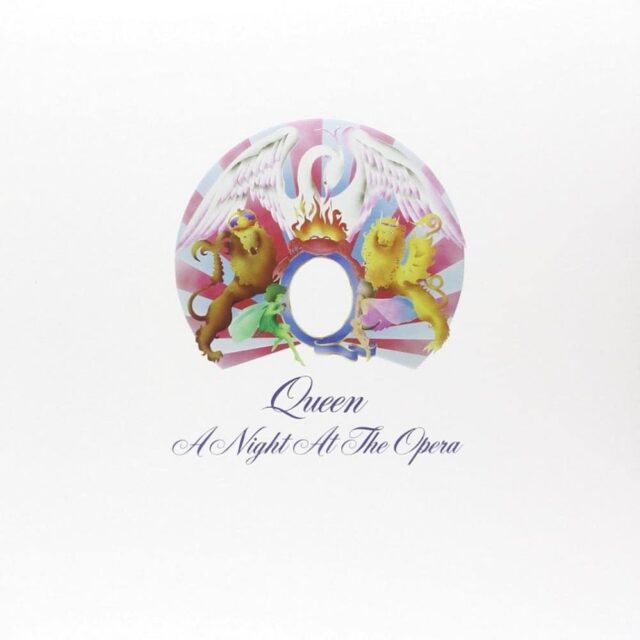In late 1982, after the huge success of Michael Jackson’s Off The Wall, producer Quincy Jones and his “A-team,” which consisted of songwriter Rod Temperton and engineer Bruce Swedien, met at Westlake Studios in Los Angeles to “save the recorded music industry” with Jackson’s new album, initially titled Starlight but later renamed Thriller.
The industry was facing serious challenges at the time: album sales were declining, and MTV, which had launched just a year earlier in 1981, was almost exclusively playing rock music.
“We wanted the sonic values of Thriller to really recharge the industry. From the start, they were under immense time pressure. One thing that I think worked for us was we didn’t have time for paralysis from analysis. We made Thriller in eight weeks,” stated Jones.
“With two months to get Thriller done, we dug in and really hit it. Michael, Rod, the great engineer Bruce Swedien and I had all spent so much time together by now that we had a shorthand, so moving quickly wasn’t a problem,” said Jones.
Nine songs were recorded for the album, but as the sessions neared completion, Jones made a critical decision. Several tracks weren’t meeting his standards, so he dropped four of the weakest songs and replaced them with “Human Nature,” “P.Y.T. (Pretty Young Thing),” “The Lady in My Life,” and a request for Jackson to come up with another song.
“I told Michael that we needed a black rock ‘n’ roll tune—a black ‘My Sharona’—and a begging tune for the album. He came back with ‘Beat It,'” said Jones. “I said, let’s do a ghetto rock and roll song.”
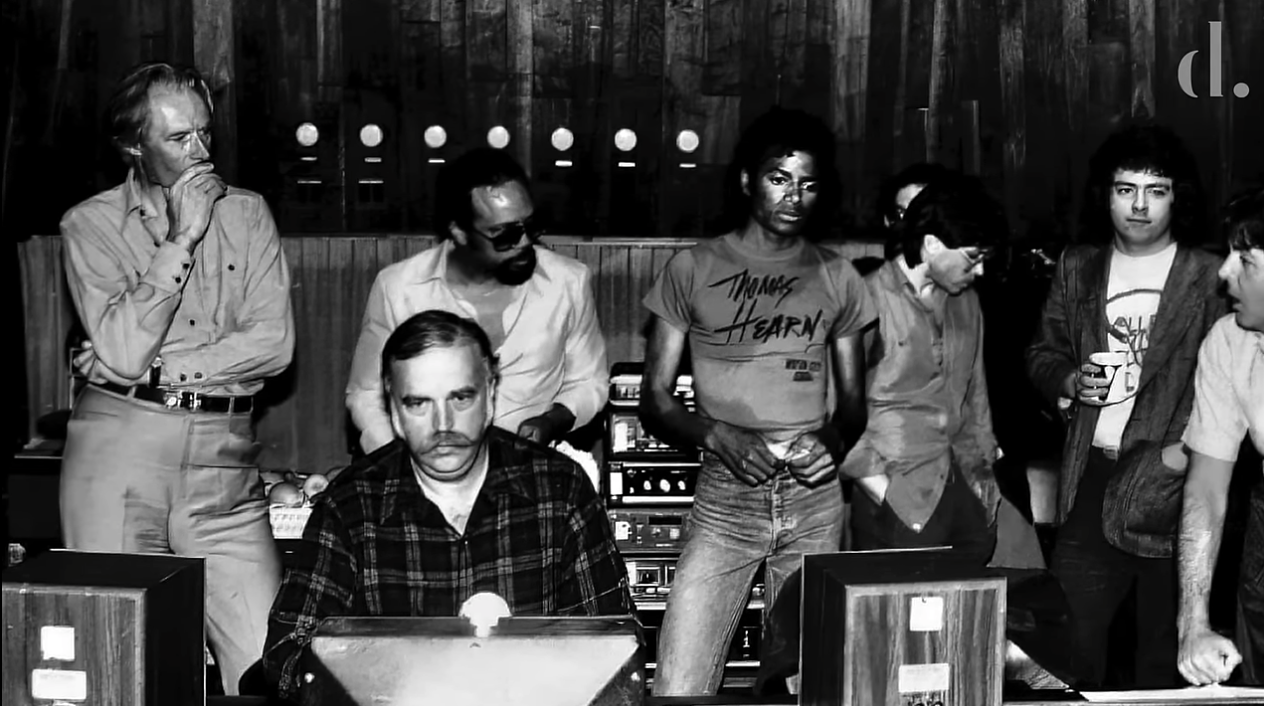
“I love Quincy. He’s a wonderful guy to work with, and I remember him telling me to write a song that I would enjoy, you know, with an edge. So I went in my room and wrote ‘Beat It.’ I don’t know why, but I did,” recalled Jackson.
“I wanted to write a song, the type of song that I would buy if I were to buy a rock song,” said Jackson. “That is how I approached it and I wanted the kids to really enjoy it—the school kids as well as the college kids.”
To help make a Michael Jackson rock song come to life, Jones called Eddie Van Halen from the American rock group Van Halen to lay down a guitar solo that would turn “Beat It” into a crossover phenomenon.
“I listened to the song, and I immediately go, ‘Can I change some parts?’ I turned to the engineer and I go, ‘OK, from the breakdown, chop in this part, go to this piece, pre-chorus, to the chorus, out.’ Took him maybe 10 minutes to put it together. And I proceeded to improvise two solos over it,” said Van Halen. “
“I was just finishing the second solo when Michael walked in… I didn’t know how he would react to what I was doing. So I warned him before he listened. I said, ‘Look, I changed the middle section of your song,'” recalled Van Halen. “And so he gave it a listen, and he turned to me and went, ‘Wow, thank you so much for having the passion to not just come in and blaze a solo, but to actually care about the song, and make it better.'”
“When we were finishing ‘Beat It,’ we had three studios going,” said Jones. “We had Eddie Van Halen in one; Michael was in another, singing a part through a cardboard tube; and we were mixing in another. We were working five nights and five days, with no sleep. And at one point, the speakers overloaded and caught on fire!”
Following the release of “The Girl Is Mine” with Paul McCartney and “Billie Jean,” “Beat It” was released on February 14, 1983, as the third single.
The album also featured other singles, including “Wanna Be Startin’ Somethin’,” “Human Nature,” “P.Y.T. (Pretty Young Thing),” and the title track “Thriller,” with all seven singles reaching the Top 10 on the US Billboard Hot 100 chart. The two remaining songs, “Baby Be Mine” and “The Lady in My Life,” were not released as singles.
Thriller became the best-selling album of all time and transformed both culture and the music industry. The album dominated the charts for 37 consecutive weeks between 1983 and 1984 and set records with seven Top 10 singles. It swept the 1984 Grammy Awards, where Michael Jackson won eight Grammys, including Album of the Year and Record of the Year for “Beat It.” The album also won eight American Music Awards and three MTV Video Music Awards, and was inducted into both the Grammy Hall of Fame and the National Recording Registry.
Two days of peace with the Crips and Bloods
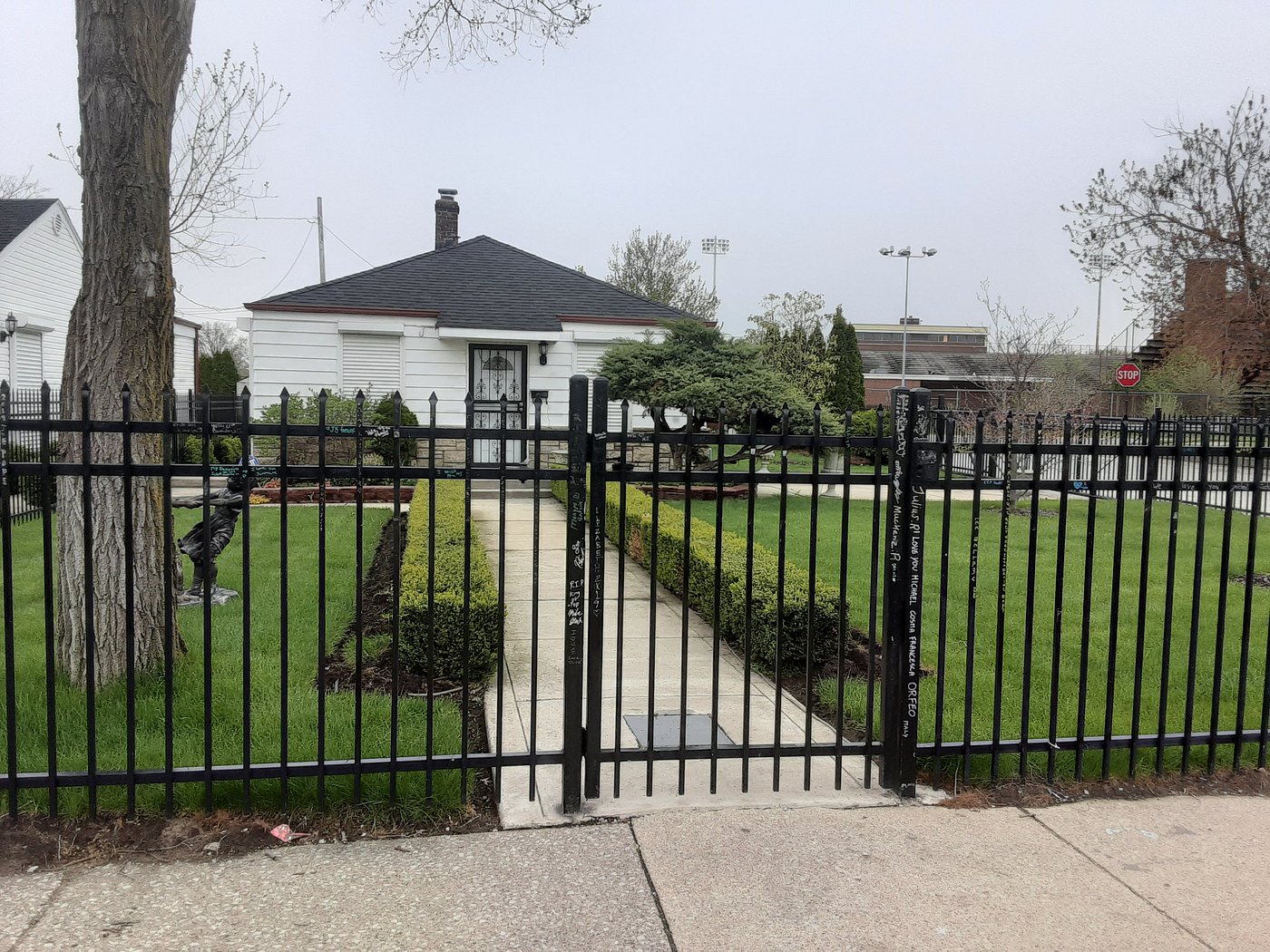
The Jackson family grew up in Gary, Indiana, a small industrial city about 25 miles southeast of Chicago. Their home was at 2300 Jackson Street, a modest two-bedroom house where Joe and Katherine Jackson raised their nine children, including Jackie, Tito, Jermaine, Marlon, Michael, Randy, Rebbie, LaToya, and Janet.
In the book You Are Not Alone: Michael Through a Brother’s Eyes, Jermaine Jackson recalled that he and brother Tito used to walk to school through the “fields that led from our house to the Delaney Projects where all the gangs congregated.”
“The gang-bangers were real friendly and waved, giving us credit for being the Jackson 5,” stated Jermaine. However, his mother Katherine, with a look of horror, said, “Those boys are not good, Jermaine. You heard what your father said—steer clear of them.”
“But then the gangs, and their fights, started encroaching nearer our street… One time, things got out of hand. Two gangs decided to rendezvous on our corner and school had been abuzz with talk of this showdown,” wrote Jermaine. “When the day came, we were locked indoors. We knew trouble was near when we heard shouting. And then the pop of a gunshot. That was when we hit the deck. ‘Get down! Everyone down!’ … There must have been about two other shots that rang out and we were lying there for about 15 minutes before Joseph checked to see if the coast was clear. ‘Now do you see what we’ve been telling you?’ he said.”
This was part of the inspiration behind the lyrics to “Beat It.”
The music video for “Beat It,” which is rumoured to be based on the 1961 movie West Side Story, is “absolutely not true at all,” according to director Bob Giraldi.
“It seemed to me this song of peace, this song of reconciliation that Michael had written was perfect for a quasi kind of rumble. I’ve read where the two lead dancers – Michael Peters and Vince Paterson – when they had their wrists tied and held the switchblades, that came from West Side Story. That’s not true at all,” said Giraldi. “That came from a story I heard when I worked in a factory one summer. A real tough kid from Jersey told me that he’d witnessed two guys who had their wrists tied and they held switchblades, and only one came out, and not too well. It was based on that little fable.”
“Michael liked my idea and decided he was going to include the Crips and Bloods, which I thought was insane,” recalled Giraldi. “He went out and he got ’em through, I guess, the LAPD’s gang squad and he convinced them that, with enough police presence, this would be a smart and charitable thing to do; get them there to like each other and hang with each other for two days doing the video.”
“Michael was always about peace. He was always about some sort of peace offering. That was his idea and the cops did go along with it,” said Giraldi.
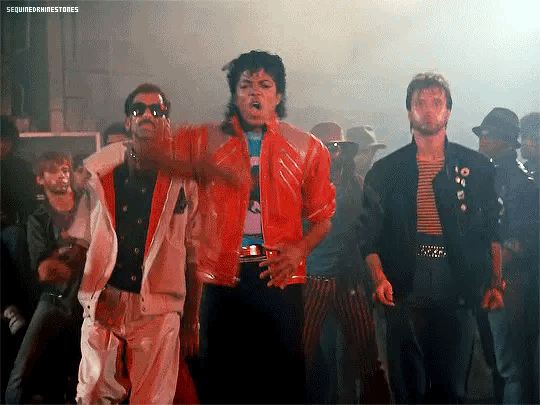
Filming for the “Beat It” music video began on March 9, 1983, in Skid Row, just east of Hollywood. To give the video an authentic street feel, the production included 50 real Los Angeles gang members alongside 25 professional dancers.
The music video starts with two gangs approaching from different ends of the street before Jackson becomes the peacemaker and unites them with dance before the knife fight gets out of hand.
“They’re rebels, but rebels who want attention and respect. Like all of us, they just want to be seen. And I gave them that chance. For a few days at least they were stars,” stated Jackson.
“Beat It” revolutionized dance choreography in music videos and introduced “mass choreography” that combined street dance with storytelling.
Lyrically: Beat It by Michael Jackson
“I really don’t write anything, to tell you the honest truth. I can say ‘me’ but I really don’t think it’s from me. I think it’s from a much higher source than me… The natural gift is there, but I don’t write songs,” said Michael Jackson in a May 1984 interview in Ebony Magazine. “I write them but the songs work through me. I can say to myself, I want to write the most beautiful this or that and the next thing I know there it is…from the lyrics to everything.”
Jackson said that “Beat It” is “about, you know, two gangs coming together, and the song is so self-explanatory.”
“I felt ‘Beat It’ should be interpreted literally, the way it was written, one gang against another on tough urban streets,” Jackson wrote in his 1988 autobiography Moonwalk. “It had to be rough.”
They told him, “Don’t you ever come around here”“Don’t wanna see your face, you better disappear”The fire’s in their eyes and their words are really clearSo beat it, just beat it
The song tells the story of an individual confronted by a potentially heated situation with gang members warning him to leave their territory. The fire in their eyes signals that a dangerous confrontation could unfold. Rather than fight back to prove toughness, Jackson’s message is that it’s wiser to walk away rather than engage, especially when outnumbered. “Beat It” delivers a consistent message that promotes peace over violence, even if it means being perceived as defeated or scared.
Jackson aims to redefine what it means to be strong. True strength, in this situation, isn’t about refusing to back down or proving dominance in a fight; it’s having the ability to think clearly instead of just reacting.
You better run, you better do what you can
Don’t wanna see no blood, don’t be a macho man
You wanna be tough, better do what you can
So beat it, but you wanna be bad
Just beat it (beat it), beat it (beat it)
No one wants to be defeated
Showin’ how funky and strong is your fight
It doesn’t matter who’s wrong or right
Just beat it (beat it)
Jackson elaborated on the song’s anti-violence message, even if it means that you will be defeated. “My objective,” said Jackson, “is I’m telling them… don’t fight, turn the other cheek. I mean, it’s your brother we killing.”
They’re out to get you, better leave while you can
Don’t wanna be a boy, you wanna be a man
You wanna stay alive, better do what you can
So beat it, just beat it (Ooh!)
You have to show them that you’re really not scared (Ooh!)
You’re playin’ with your life, this ain’t no truth or dare (Ooh!)
They’ll kick you, then they’ll beat you, then they’ll tell you it’s fair
So beat it, but you wanna be bad
Just beat it (beat it)
The message is clear. Beat it, meaning to walk away and to prioritize survival and peace.
“In a world filled with hate, we must still dare to hope. In a world filled with anger, we must still dare to comfort. In a world filled with despair, we must still dare to dream. And in a world filled with distrust, we must still dare to believe,” said Jackson in his 1988 autobiography Moonwalk.
“In the music business, every decade you have a phenomenon. In the ‘40s you had Sinatra, in the ‘50s Elvis, in the ‘60s the Beatles, in the ‘70s the innovation of Dolby, despite the best efforts of Stevie Wonder and Elton John. In the ‘80s you had Michael Jackson. He was the biggest entertainer on the planet,” said Jones.

